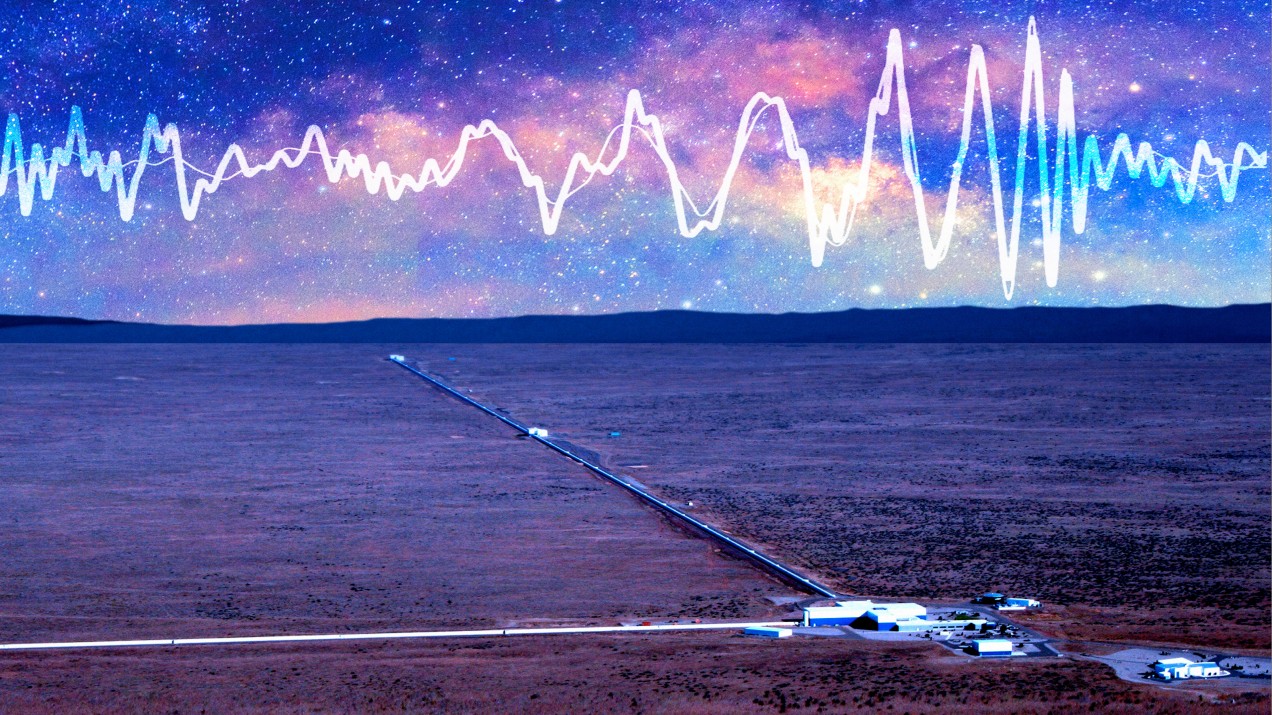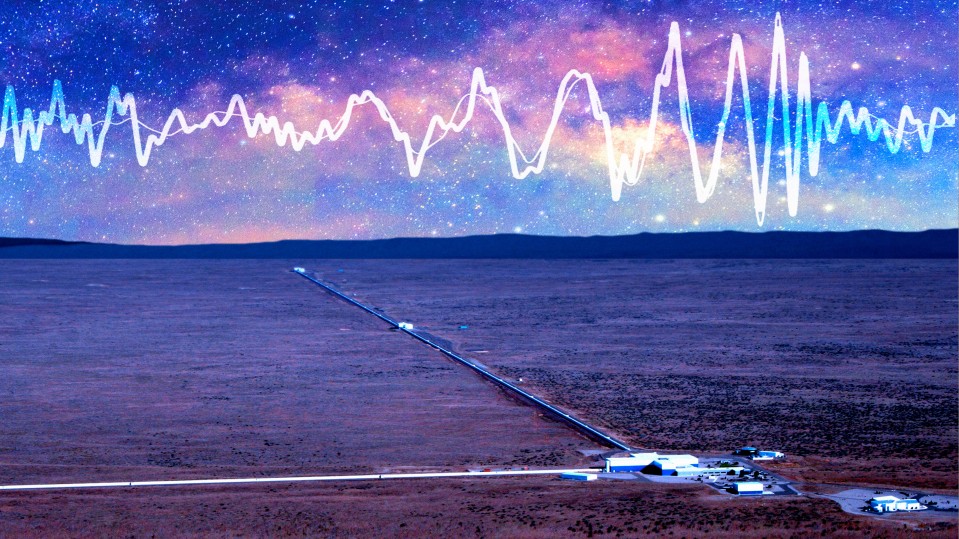

Intelligent Machines
Listening to the Heavens: The Discovery of Gravitational Waves Proved Einstein Right
Using high-precision devices supported by ADI sensors and other technologies, scientists detected gravitational waves—confirming a major prediction of Einstein’s general theory of relativity.

The event was momentous—and the statement announcing it to the world came in a duly excited tone, while also being spare and to the point: “Ladies and gentlemen, we…have detected…gravitational waves! We did it!”
With those words, David Reitze, executive director of the Laser Interferometer Gravitational-Wave Observatory (LIGO), revealed the discovery to a room packed with journalists at the National Press Club in Washington, D.C., on February 11, 2016. (The actual detection occurred on September 14, 2015.)
The discovery provided the first evidence to support Albert Einstein’s belief in the existence of gravitational waves that was part of his general theory of relativity. A new field of scientific inquiry, called gravitational wave astronomy, fueled this notable achievement at LIGO—through the use of a laser device, called an interferometer, that includes high-precision sensors, operational amplifiers, and other products from Analog Devices, Inc. (ADI).
The source of the gravitational wave was the collision of two black holes, 1.3 billion light years away from Earth, which created a gravitational-wave power 10 times greater than the combined radiated energy of all the stars in the universe.
“They found Einstein’s [gravitational] waves 100 years later, and it happened right here, and here’s the machine that did it,” marvels David Kress, director of technical marketing at ADI and an MIT alumnus. “There’s nothing better—and I know that our parts are in it.”
Listening to the Universe
LIGO consists of two observatories and facilities—one in Hanford, Washington, and the other in Livingston, Louisiana—both of which began operating in 2002. The National Science Foundation (NSF) funded that large-scale physics project, and these facilities were then created, built, and operated by Caltech and MIT. The twin observatories, which are among the largest and most ambitious NSF-funded projects to date, were designed to “observe” astrophysical gravitational waves—which can’t actually be seen. The only way to detect the existence of gravitational waves is to “listen” to the heavens.
Each LIGO facility places a laser within an ultra-high vacuum, splits the laser in two, and sends each beam down one of two 2.5-mile arms set perpendicular to one another. The laser beams are then reflected back from mirrors placed at the ends of the arms.
Interferometers are investigative tools routinely used in science and engineering. They work by merging two or more sources of light to create an interference pattern, which can be measured and analyzed. LIGO’s interferometers are designed to detect measurements too small to be obtained through other methods.
When a gravitational wave passes, it alters time in the surrounding area, causing a minute movement of the arms relative to each other, on the order of 1/1000th the width of a proton. That changes the relative phases of the returned light once the devices receive the data, releasing light to an optical sensor, which results in a measurable signal or “chirp.”
“When you think of a traditional observatory, you get a mental picture of someone peeking through a viewfinder, looking out into space through a telescope that is designed to receive light,” says Rich Abbott, lead analog circuit designer at LIGO. “What LIGO does—and what makes it unique—is that it measures gravitational waves, which don’t show up like light.” To describe the exceptional sensitivity of LIGO’s interferometer, he compares it to a weighing scale: “If you could take all the sand off all our beaches on Earth and pile it on the weighing scale, the LIGO detector is sufficiently sensitive that you could detect the removal of less than a grain of sand.”
High Performance: LIGO and ADI Technology
LIGO uses a host of integrated circuit technologies from ADI. The LIGO interferometers work by predicting and compensating for all possible ambient noise and vibration sources. That means that the laser output used by the interferometer must remain ultra-stable, with extremely slight variations in frequency and amplitude.
For that reason, the LIGO team needed a feedback system to adequately measure light output while controlling the amplitude. That called for an ultra-low-noise amplifier with high performance. The LIGO team chose ADI’s AD797 operational amplifier (or “op amp”) for its very low-noise and low-distortion capabilities. The AD797 op amp is also used in infrared and sonar imaging applications, among other uses. Other ADI products are also used in the LIGO technology:
- ADI’s AD590 high-precision temperature sensor stabilizes laser frequency and measures the average temperature of the glass vacuum chamber that houses the laser.
- Output in the laser can quickly build up to kilowatts within the resonant cavities of the arms, distorting the measurements. LIGO uses an ADA4700 high-voltage op amp to drive electrostatic actuators to keep the mirrors in alignment.
- Solenoids drive LIGO’s mirror-suspension system. In that system, the AD736 RMS chip measures the power delivery to the solenoids, enabling any required and precise tilt, pitch, and yaw.
Stabilizing the laser’s amplitude is among the keys to its successful recognition of the gravitational waves because “fluctuations could appear like signals,” Abbott notes. “That’s why we needed such a focused, non-garden-variety, solution.”
Proving Einstein Right Through Performance
The first-ever image of a real gravitational wave signal was initially detected at LIGO Livingston; then just 7 milliseconds later, it arrived at the Hanford site. The discovery happened during the first week of using new “advanced” LIGO laser detectors, which included the ADI integrated circuit technologies. The LIGO team was thrilled to detect the gravitational waves so soon after installing the new device—and that the signal was so “loud” as to be unmistakable.
The lag between the gravitational wave signal’s discovery and its public unveiling reflected the team’s need to investigate and confirm that it was, indeed, real. For several weeks, LIGO scientists conducted experiments at both observatories to rule out the possibility that an instrumental anomaly or software glitch caused the signals. Eventually, scientists completed what’s known as a correlation and coupling analysis, which concluded that the signal could only have originated in deep space. All LIGO staff were sworn to secrecy from then until the public announcement.
Later, a second gravitational wave was detected on Christmas Day, 2015. Again, scientists thoroughly investigated, and, after confirming the signal’s cosmic origin, announced its detection on June 15, 2016.
When Einstein proposed the existence of gravitational waves and black holes, he believed that it would be essentially impossible to actually ascertain them. The fact that ADI sensors and other devices contributed to the precision of the interferometers that eventually accomplished this feat remains a source of great pride for those involved with developing the technology.
“Analog Devices has been supporting precision applications for Earth observation, space- communication positioning, launch vehicles, and space exploration for over 40 years now,” says Bob Barfield, director of aerospace and defense at ADI. “When you think about what is in space and what is beyond what we know right now, it is mind-boggling. Some of the things that are being discovered—it’s just exciting to think that we’re on the edge of that.”
To learn more and to view a video about the LIGO project, visit www.analog.com/en/landing-pages/001/ligo.html?icid=ligo_en_hp.
Advertisement
